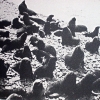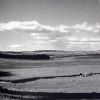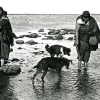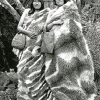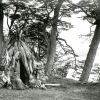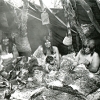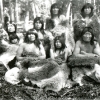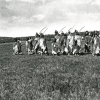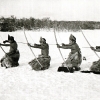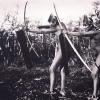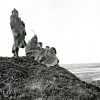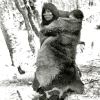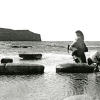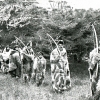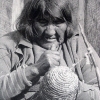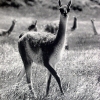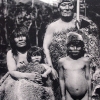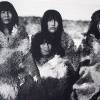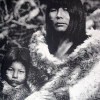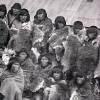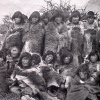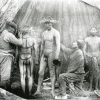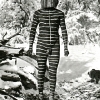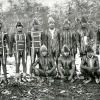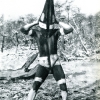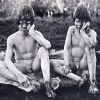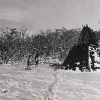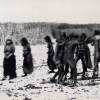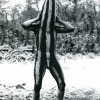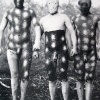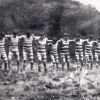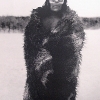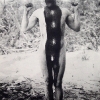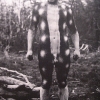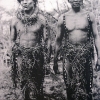Economy
The Selk’nam people were a terrestrial hunter-gatherer people that moved around frequently to make use of resources dispersed around the island. Guanaco were of prime importance to the Selk’nam, who hunted these camelids with bow and arrow and also with bolas. This activity was exclusive to the male members of the group, although both men and women fished and hunted other species. Every member of the group was expected to work, except small children, elders and the sick. Those with special skills that were
valuable to the group’s economy—bow-makers, arrow-makers, makers of certain hunting implements and shamans—were distinguished with honorary titles. Women performed virtually all domestic work, gathering food, cooking, weaving baskets, preparing and curing animal skins, caring for children and transporting domestic implements. Women also collected firewood, obtained water and built the Selk-nam dwellings. Meanwhile, the men manufactured tools from stone, bone and wood and provided the materials needed for the group’s food, clothing and housing. The Selk’nam’s only domestic animal was the dog, which they considered indispensible for hunting guanaco and fox. Though it is not known when dogs were first adopted, they were considered so valuable that they were inherited by relatives when their owner died.
Before the days of industrial fishing, sea lions and whales abounded in the region. When these animals beached themselves occasionally, the entire community took the opportunity to hold a lengthy celebration. The Selk’nam consumed virtually all bird species available, except for birds of prey. Women and children collected bird eggs, fungi, berries and mollusks on the coast and in the territory’s rivers, lakes and lagoons. Plants were not a major component of their diet, but a complement to their main food—animal meat—especially when the latter was scarce. In times of famine, the people ate seaweed.



